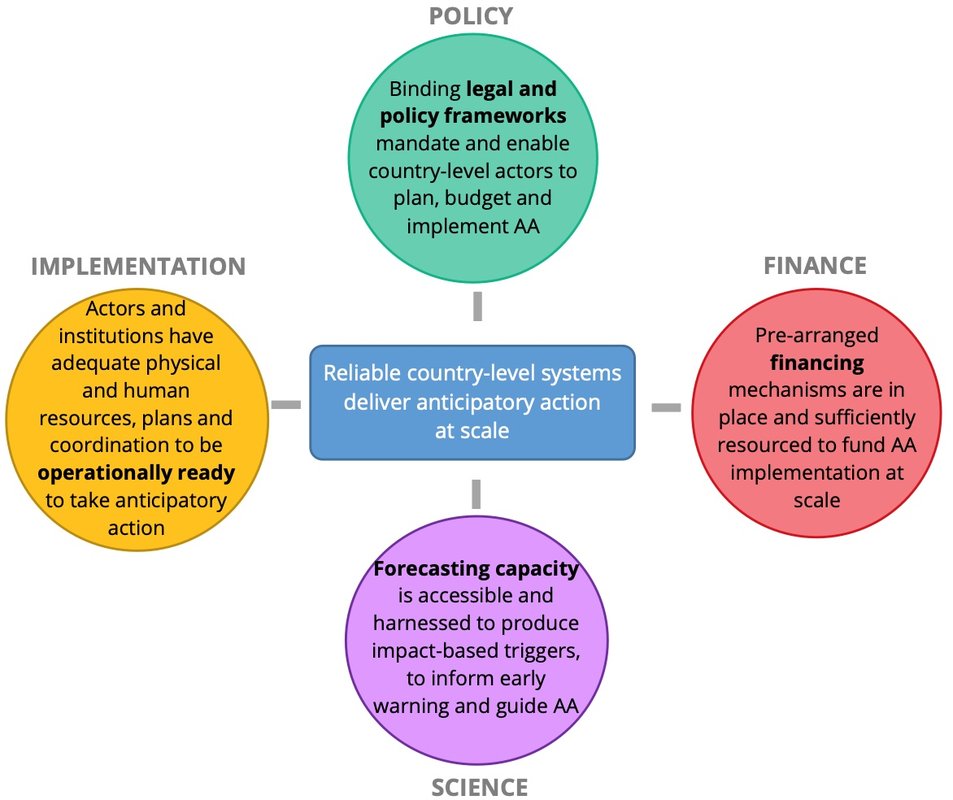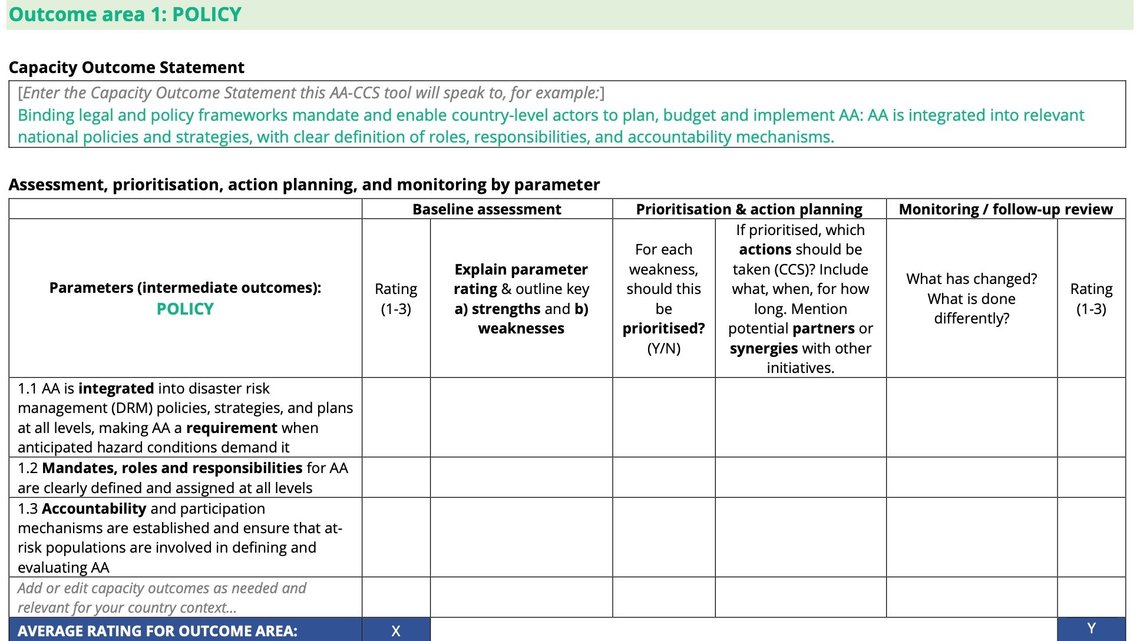Categories
New guidance on planning and monitoring country capacity strengthening for anticipatory action
What does it take to put in place an anticipatory action mechanism that works reliably, sustainably, and at scale? A new guidance document suggests the essential requirements. It also provides a simple tool for planning capacity-strengthening interventions and tracking progress.
Anyone who has ever tried to learn a new language will appreciate that capacity strengthening is an endogenous process. It cannot be done for you by someone else ‘from the outside’; it comes from within. But external support, resources and tools can be instrumental in enhancing one’s capabilities. This also applies to anticipatory action, where many organizations spend considerable time and effort establishing comprehensive systems, or help their partners to do so.
Based on experiences of supporting capacity strengthening for anticipatory action in multiple countries, the World Food Programme (WFP) has put together a short guidance document on this topic, in collaboration with the Red Cross Red Crescent Climate Centre. While the content may be tailored to WFP’s organizational context in certain segments, the concepts and tools presented should be applicable to most country and institutional settings.
Essential ingredients: four main capacity outcomes to make anticipatory action ‘work’
The objective of country capacity strengthening for anticipatory action is to enable country-level stakeholders to act decisively, sustainably and at scale in anticipation of extreme climate events. This means that they can draw on the necessary systems, processes, resources and information to deliver anticipatory action every time the prevailing hazard conditions and outlook command an activation.
Achieving readiness for anticipatory action at scale typically requires capacity in four critical, interconnected outcome areas, as illustrated in the figure below: (1) policy; (2) finance; (3) science; and (4) implementation. Each of these outcomes comprises several parameters, or intermediate outcomes, which can be adapted to context and need. Some outcomes entail behavioural changes, while others call for specific institutional arrangements that will drive anticipatory action that is locally owned and led.
The main capacity outcomes required to anchor anticipatory action in country-level systems

How to strengthen capacity for anticipatory action? A typology of interventions
Country capacity strengthening for anticipatory action is no different to capacity development initiatives in other thematic areas. Therefore, the types of intervention broadly fall into four common categories:
- Individual capacity development. For example, organizing training (in-person or online), coaching and mentoring, twinning arrangements, and knowledge-sharing and learning platforms.
- Process development and support. For example, putting in place and institutionalizing coordination mechanisms, organizational development efforts, making analysis and reporting functions regular, supporting partnership development, and formalization.
- Product development and support. For example, drafting plans and policies, standard operating procedures and forecast products.
- Assets. For example, providing equipment, supplies or construction activities.
- Financial mechanisms and budgetary support.
A step-by-step tool for baseline assessment, prioritization, action planning and monitoring
The guidance document comes with the ‘AA-CCS’ tool, a simple template that guides the user through the process of assessing existing capacities in each outcome area, prioritizing gaps, planning capacity-development interventions, and monitoring progress (an example of this is below). Ideally, this is done jointly with the government or with local partners who own and lead the process, but it can also be executed in house as a ‘strategic diagnostic’. Users are encouraged to adapt the approach and tool to their needs, based on their programme context and priorities.
The AA-CCS tool for assessing, planning and monitoring country capacity strengthening

Download the guidance document
Download the guidance document here. Please note that a few links may only be accessible to WFP users. However, all of the essential content and templates are contained in the guidance document.
This blog post was written by Clemens Gros, Red Cross Red Crescent Climate Centre.
Main photo © WFP/Sayed Asif Mahmud

